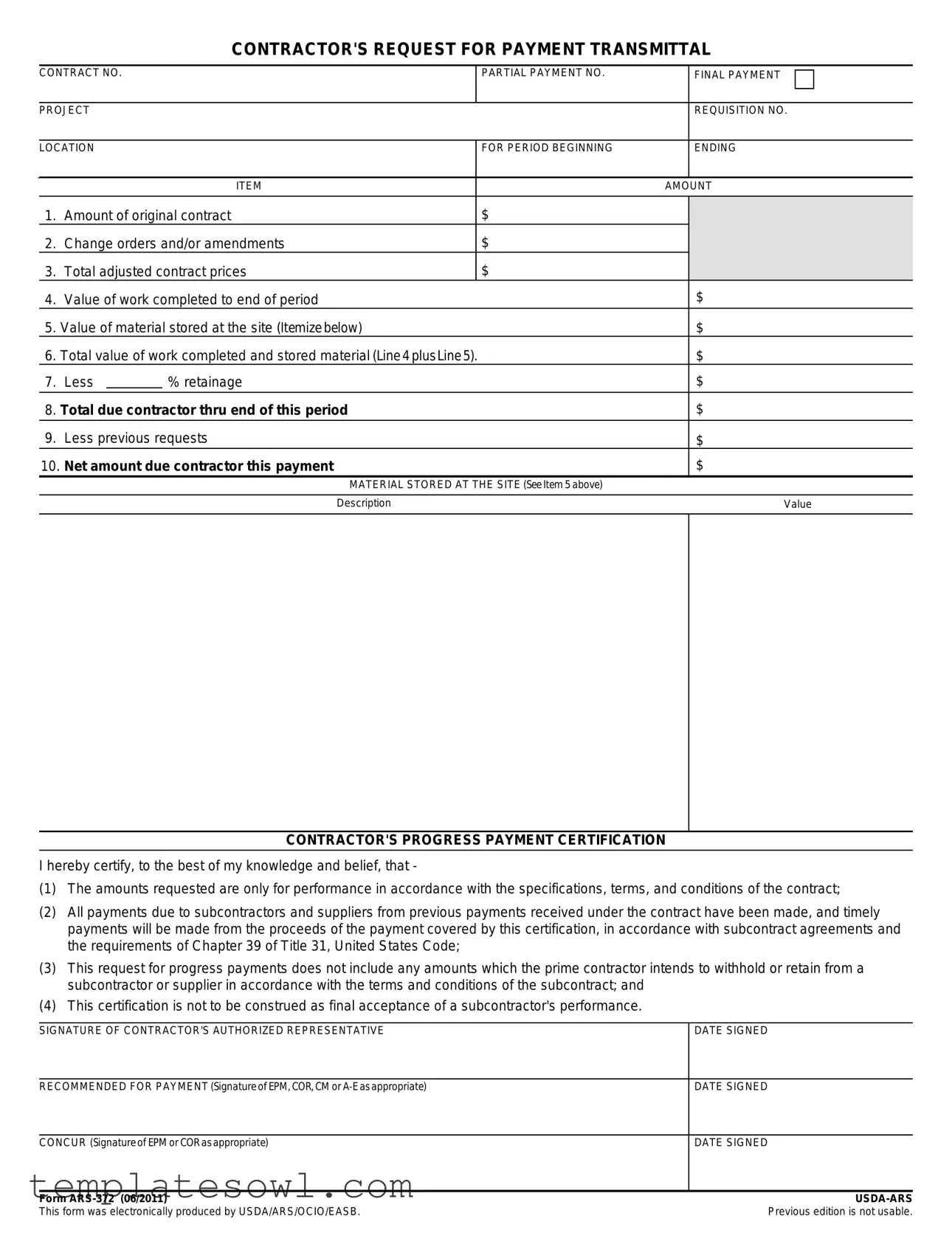What is the purpose of the ARS 372 form?
The ARS 372 form, also known as the Contractor's Request for Payment Transmittal, serves as a formal request for payment from contractors to project owners or agencies. It details the amounts that should be paid for work completed as per the contract terms. This ensures clear communication and documentation between both parties regarding progress payments and project expenses.
What information is required on the ARS 372 form?
When filling out the ARS 372 form, contractors must provide comprehensive details including the original contract amount, any change orders or amendments, and the total adjusted contract price. Additionally, it requires precise values for work completed, materials stored on-site, and any retainage percentages. Clear and accurate-itemization helps facilitate faster payment processing.
How does retainage affect the payment amount on the ARS 372?
Retainage is a percentage of the contract payment that is withheld until the project is completed satisfactorily. On the ARS 372 form, after calculating the total value of work completed and the value of stored materials, the retainage percentage is deducted from the total due to arrive at the net payment amount. This practice protects project owners while also ensuring that contractors are incentivized to complete their work to the required standards.
Who needs to sign the ARS 372 form before payment is processed?
The ARS 372 form requires signatures from multiple parties to validate the request for payment. Specifically, it must be signed by the contractor's authorized representative, who certifies the accuracy of the request, and may also need approval from the project's engineering, contracting officer, or project manager. These signatures ensure that all parties agree on the progress made and the amount requested.
What is the significance of the contractor's progress payment certification?
This section of the ARS 372 form is crucial. The contractor certifies that the payment request aligns with contract specifications, that all prior payments to subcontractors have been made, and that no amounts to be withheld from subcontractors are included in the request. This certification helps protect not only the contractor's interests but also provides assurance to the project owner about the subcontractors' financial compliance.
Are there any specific guidelines for submitting the ARS 372 form?
Yes, while submitting the ARS 372 form, contractors should ensure that it is completed fully and accurately before submission. Any outline of materials stored should be itemized clearly. Additionally, it’s essential to adhere to agreed timelines for submission, as delays can affect cash flow and project progress. Contractors should always keep a copy for their records and confirm that the appropriate parties receive the request.

